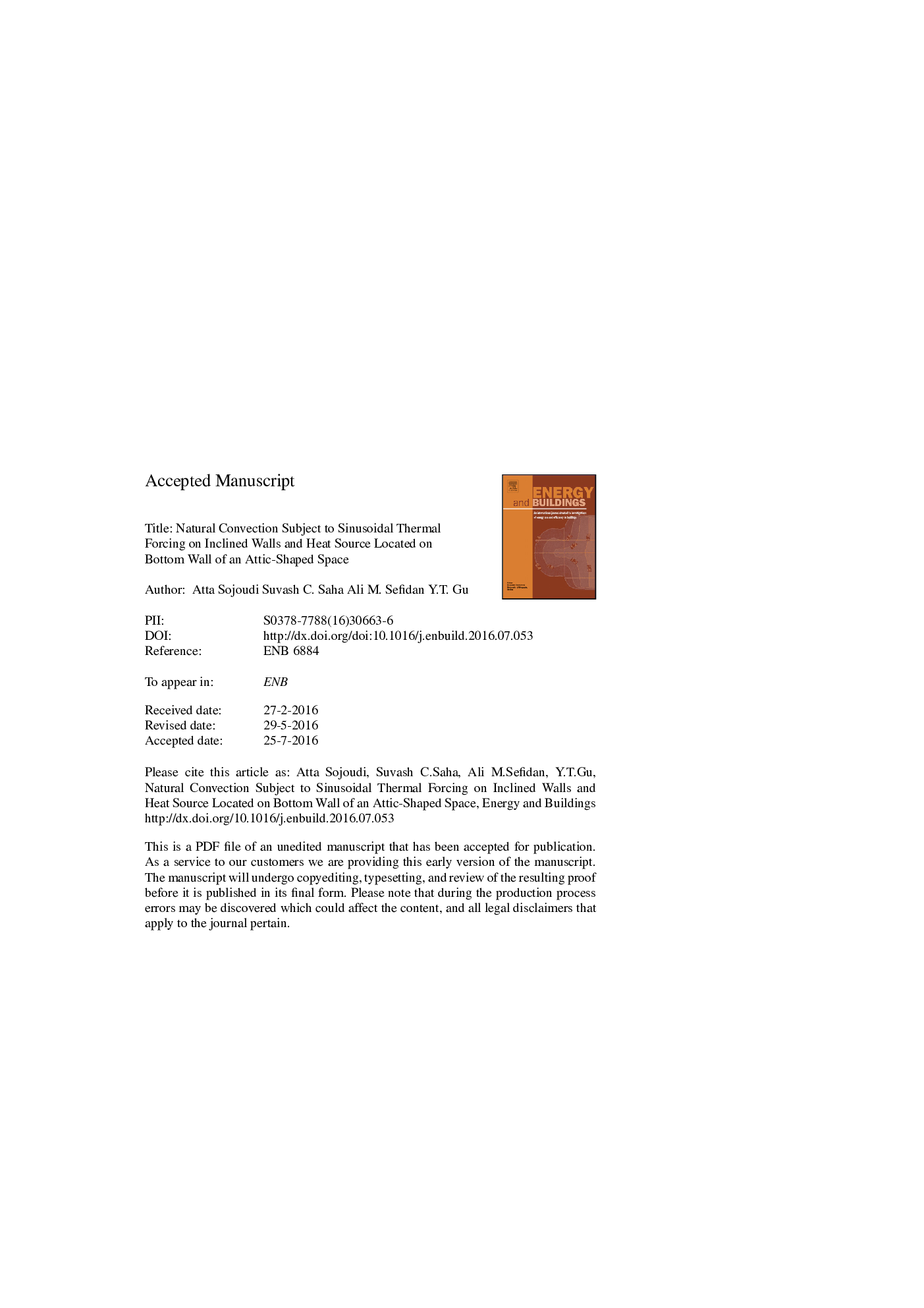| Article ID | Journal | Published Year | Pages | File Type |
|---|---|---|---|---|
| 6729907 | Energy and Buildings | 2016 | 14 Pages |
Abstract
Natural convection within an attic space under diurnal temperature condition on the sloping wall and a heat source located on the insulated bottom wall have been studied to show the basic flow features in the attic space over diurnal cycles. The finite volume numerical method has been employed to solve the governing equations. Effect of Rayleigh number (Ra), attic aspect ratio, heater location and its size are discussed on the transient flow pattern and heat transfer phenomenon after grid independency and time interval selection tests with a fixed prandtl number of 0.72 (air). Results are presented as a form of isotherms and streamlines. Also, heat transfer is presented as a form of Nusselt number. The numerical experiments show that, the flow in the attic space is stratified during the daytime heating stage; whereas the flow becomes unstable at the night-time cooling stage.
Keywords
Related Topics
Physical Sciences and Engineering
Energy
Renewable Energy, Sustainability and the Environment
Authors
Atta Sojoudi, Suvash C. Saha, Ali M. Sefidan, Y.T. Gu,
